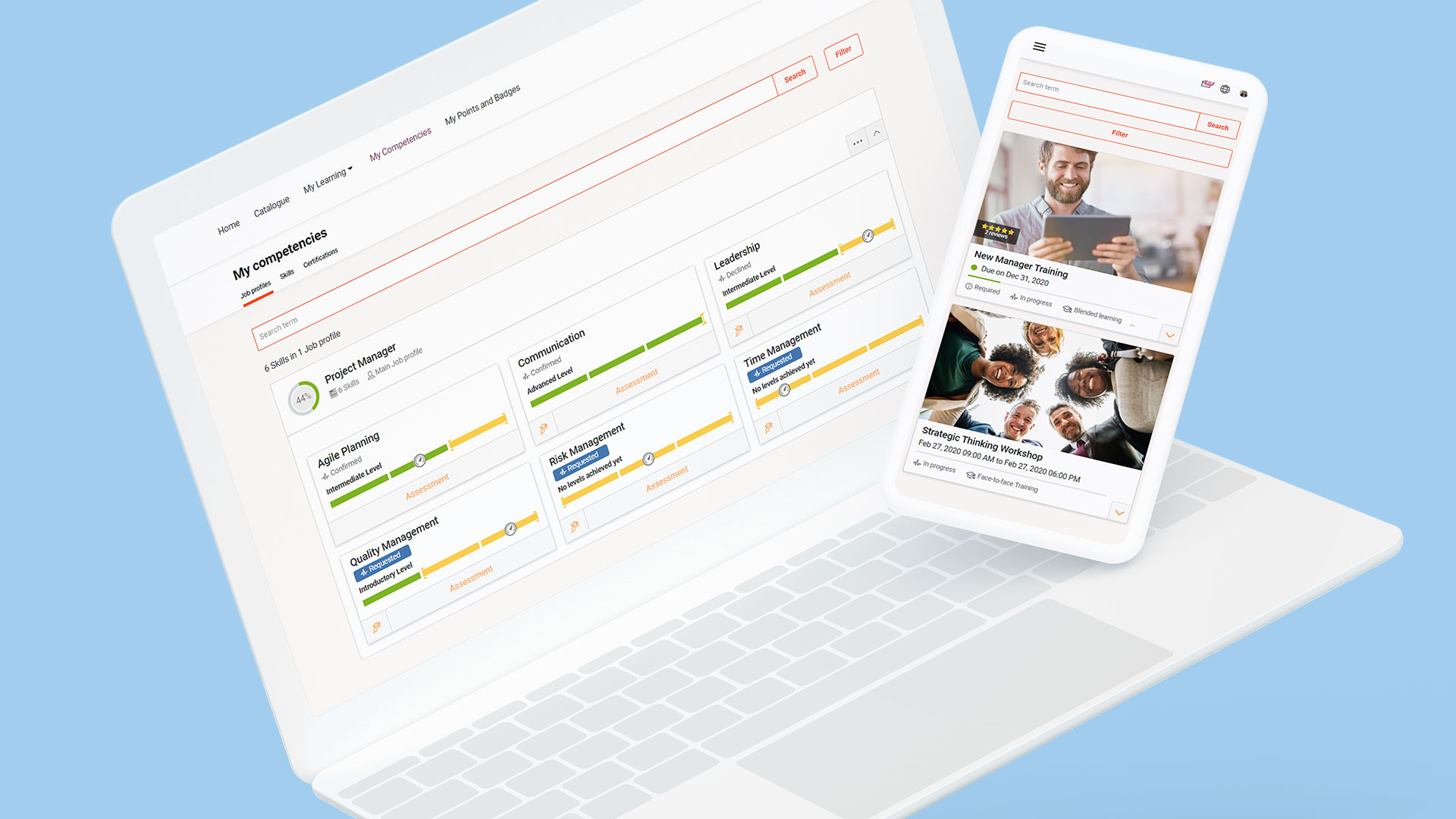
Requirements an LMS must map for validated processes
... and how the series “Breaking Bad” would have stood up against 21 CFR Part 11
Do you know why pharmaceutical and medical companies might envy Walter White, the drug chef from “Breaking Bad”? Well, in contrast to those producing legal medication or medical products, he never had to deal with validated processes in a Learning Management System (LMS)! We reveal the processes suitable software must map if patient health is of concern, and where 21 CFR Part 11 comes into that.
Good to know
The US-American series “Breaking Bad” revolves around 50-year-old chemistry teacher Walter White. After being diagnosed with lung cancer, he starts a career as a drug chef and is caught in a downward spiral. The series received many awards around the world, and aired in the USA from 2008 until 2013.

What does the FDA regulate?
Let’s assume anti-hero Walter White and his companion Jesse Pinkman had managed a regular pharmaceutical or medical company. They would then be subject to regulation by the U.S. Food and Drug Administration (FDA) like all companies in this high-risk sector.
As a government agency under the U.S. Department of Health and Human Services, the FDA imposes strict rules on companies that manufacture food products, drugs and medical devices in general. All companies offering their products and produce in the USA are bound by these rules. In addition to the FDA, the European Medicines Agency (EMA) also enacts such rules through the EU. This also includes good practice guidelines (GxP).
Info
GxP guidelines include GMP and GCP guidelines, which relate to the correct processes (Good Manufacturing Practice: GMP) and Good Clinical Practice (GCP) that must be applied in the production of medicinal products and substances.
Keeping with our analogy, Walter’s opponent, police investigator Hank Schrader, would have worked for the FDA instead of the Drug Enforcement Agency (DEA), and supervised the proper and traceable production.
Validation requirement pursuant to FDA 21 CFR Part 11? What?!
Imagine, Walter and Jesse had now established the legal company “Heisenberg Limited”. To ensure that their substance – sorry, the drugs – stay pure and are produced in a sterile environment to the highest hygiene standards, production takes place in a cleanroom instead of a caravan.
However, the only way to access this cleanroom is via an electronic airlock secured with a card reader. Only individuals who have passed the training course “Conduct in sterile rooms” in the past 12 months have access. Jesse would therefore have had to complete proper training first, rather than being trained on the job by Walter.

An enterprise learning management system assumes the airlock and access control, only allowing suitably trained personnel to enter. Given that this makes the LMS an integral part of the production process and errors could put patient lives at risk, it is subject to a section of the Code of FDA, which is entitled 21 CFR Part 11 (CFR: Code of Federal Regulations).
In 21 CFR Part 11, the FDA formulates its requirements for producers of pharmaceutical and medicinal products in relation to all electronic records that are digitally created, amended, stored, transferred or accessed in any form. This can be in the form of texts, images, videos or audio files [Source: Johner Institut].
The validation requirement applies for enterprise learning management, demanding documentation of detailed proof that a technical process fulfils the requirements. Basically, this aims to assure the quality of a product to prevent serious errors. After all, nobody wants to produce or take drugs that are ineffective or even harmful.
Definition validation
- Validation means furnishing proof that a process permanently produces a product according to specifications and quality standards with a high degree of assurance.
- Validation of a computer-based system means the documented proof that the system satisfies the regulatory requirements, and that it currently works as required according to the specifications and will continue to do so in the future.
[Source: FDA Guidelines on General Principles of Process Validation]

“Never trust the user”: What a system must fulfill
To prevent this, production is guided by the following two mottos: Never trust the user! And: Anything that can be checked will be checked. To minimise human error, the FDA requires that any system used in this production process is validated and performs visible functions of such a validatable system, which include:
1. Audit trail
All data must be available in valid form, traceable and logged automatically, and it must be possible to export it. All modifications, planned courses and registrations are recorded using audit trails. Moreover, defined rights and roles must be clearly visible. It must be possible to trace at any time, what was changed when by whom and in which form.
2. Electronic signature
An electronic signature can be defined as a requirement for the performance of certain critical actions. Changes may then only be carried out by authorised persons, who must confirm their authorisation with their user ID and password. This might apply, for example, to the approval of tests or the registration of learning content.
3. Versioning (approved records)
All learning content – from courses through course templates, learning path types, test questions, tests and certificates to cost centres or cost types – are subject to versioning. Any time the object characteristics are edited, the latest version of the object is stored in the system as a numbered version, and published if required. That means older versions cannot be lost. After all, modifications might need to be stored and documented for several years.
[Source: German only: §20, Prescription of drugs and active ingredients]
But that’s not all: Once these requirements are met, Heisenberg Limited must use validated processes to ensure that a risk analysis is carried out for each process and function before it is implemented, including the LMS. What happens if a user from category Y with X rights clicks Z button? What potential errors exist, and what is the effect resulting from these errors? What risks or dangers does an error create for the patient?
This can only be successful, traceable and verifiable if roles, processes and rights are clearly defined. The same applies to things like authorisation concepts and patches.
Validation good – all good – deal?
If this is starting to give you a headache and you’re tempted to reach for pharmaceutical products like headache medicine to ease that, we won’t be of much help. However, if you decide that you want to learn more about validation, we can offer you a deal.
Take a look at our webinar recording on validiation and LMS (German only). Or send us a message. We really are nicer than the DEA or FDA. That’s a promise!

LMS Business Case: Why the gains outweigh the costs
A Learning Management is far too expensive? Not if you use it in the right way! Even more: For most clients, an LMS pays for itself within a year. We tell you how to prove that with a Business Case and answer some FAQs.

Learning Analytics: It comes down to the right questions
Learning must not be an end in itself, but fit in the company’s business outcome: More and more managers are demanding this. We therefore looked at how L&D managers can meet this requirement with the help of Learning Analytics.

More about our LMS
If you would like to learn more about imc's Learning Management, check here for more information.
